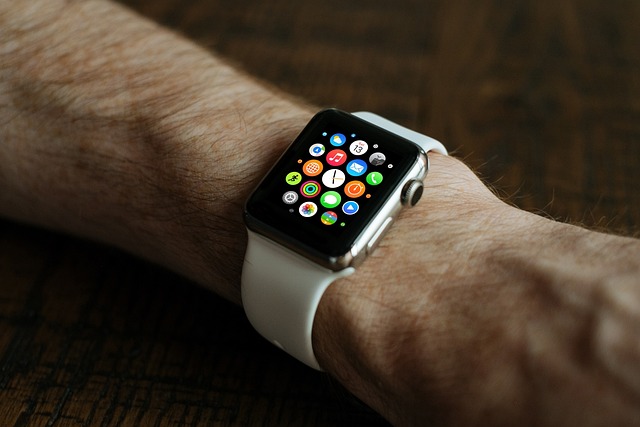Apple Watch users have warranty options for one year against defects, with an additional year for the Edition model in select regions. For issues like battery degradation, users can opt for a free service or replacement within this period. To extend coverage and gain accidental damage protection, consider enrolling in AppleCare+, which includes two incidents of battery-related issues for a service fee. Standard warranty does not cover cosmetic damage, water damage except for manufacturing defects, so handling your device with care is advised to avoid unexpected issues. Battery replacements under warranty can be initiated by checking eligibility on Apple's support site and are performed at no cost by authorized service providers or at Apple Stores. Always back up your data before a battery replacement. Third-party extended warranties offer additional protection against accidental damage and provide cost-effective battery services. Self-service battery replacements are an option for DIY enthusiasts, but it's crucial to follow official guides to avoid damaging the device. Authorized service providers ensure professional assistance while maintaining your warranty status. Regular software updates, adjusting brightness levels, managing notifications, and charging habits can help prolong your Apple Watch battery life, potentially reducing the need for early replacements.
When it comes to safeguarding your investment in technology, understanding the intricacies of warranty coverage and replacement processes is key. This article delves into the specifics of Apple Watch warranty, outlining what’s covered, limitations to be aware of, and steps for battery replacement under warranty terms. Whether you opt for an extended warranty or self-service options, knowing your choices ensures you can maintain your device in peak condition. We’ll guide you through the nuances of authorized service providers versus DIY approaches for replacing your Apple Watch battery, ensuring you make informed decisions to extend your watch’s lifespan and performance.
- Understanding Your Apple Watch Warranty: Coverage and Limitations
- The Process of Replacing an Apple Watch Battery Under Warranty
- Extended Warranty Options for Apple Watch Owners
- Self-Service vs. Authorized Service Providers: Replacing Your Apple Watch Battery
- Tips for Maintaining Your Apple Watch to Avoid Battery Replacement Needs
Understanding Your Apple Watch Warranty: Coverage and Limitations

When it comes to ensuring your Apple Watch remains in optimal condition, understanding the warranty coverage and its limitations is crucial. Apple offers a standard one-year limited warranty for new purchases of the Apple Watch, which safeguards against defects in materials and workmanship. If you encounter any such issues within this period, Apple will provide service or replacement free of charge. However, to keep your device beyond the initial warranty period, consider investing in the AppleCare+ plan, which extends coverage for up to two years from the purchase date and provides additional benefits like up to two incidents of accidental damage protection with a service fee for screen or back crystal damage, or for battery issues, you can opt for a replacement apple watch battery service.
It’s important to note that your Apple Watch warranty does not cover cosmetic damage, such as scratches and dents, which are almost inevitable over time, especially if you lead an active lifestyle. Additionally, water damage, unless due to a manufacture defect, is typically not covered. To prolong the life of your Apple Watch and avoid unwanted surprises, be mindful of how you handle and store your device. For instance, removing your Apple Watch before swimming or bathing can prevent water-related issues. If you suspect that your Apple Watch needs maintenance or if its battery performance is subpar, it’s advisable to check the coverage details under your warranty or AppleCare+ plan promptly. Should you need a replacement apple watch battery service beyond the initial warranty period with an AppleCare+ plan, ensure you follow the appropriate steps as outlined by Apple, including visiting an authorized service provider for assistance.
The Process of Replacing an Apple Watch Battery Under Warranty

Should your Apple Watch’s battery begin to wane, understanding the process for replacing it under warranty is crucial for maintaining optimal performance. Apple offers a one-year limited warranty that covers any defects in materials or workmanship, and in certain regions, this is extended to two years for the Apple Watch Edition. To initiate the battery replacement process, you must first determine whether your device is still within its warranty period. This can be done by visiting Apple’s official support website and referencing your proof of purchase or serial number.
If your Apple Watch qualifies for warranty service, you can either visit an authorized Apple Service Provider or Apple Store to have the battery replaced free of charge. Prior to service, it’s advisable to back up your Apple Watch using your iPhone and iCloud. During the service process, your device will be examined to confirm the battery issue falls within warranty coverage. Upon approval, your Apple Watch will be expertly serviced with a new battery, ensuring your timepiece resumes its reliable operation as swiftly as possible. It’s important to follow the instructions provided by Apple for the duration of the service process, including any steps required upon receipt of your serviced Apple Watch. This will help guarantee a smooth and successful replacement experience.
Extended Warranty Options for Apple Watch Owners

Apple Watch enthusiasts with an eye on longevity and maintenance can explore extended warranty options that cater specifically to their needs. For those who wish to extend the coverage beyond the standard one-year limited warranty provided by Apple, third-party service providers offer plans that can cover accidental damage and even the replacement of components such as the apple watch battery. These extended warrantanties often include battery service at a discounted rate or even free of charge within the term of the warranty. This ensures that your timepiece remains accurate and responsive, as the battery is one of the key components affecting the Apple Watch’s performance. When considering an extended warranty for your Apple Watch, it’s pivotal to review the terms and conditions to understand what is covered and under what circumstances you can replace the apple watch battery without incurring a full service fee. These plans are designed to offer peace of mind, allowing you to focus on making the most out of your Apple Watch experience, secure in the knowledge that any potential issues with the battery or other components can be addressed promptly and cost-effectively.
Self-Service vs. Authorized Service Providers: Replacing Your Apple Watch Battery

When the time comes to replace your Apple Watch battery, understanding the options available to you is crucial. You have two primary routes: self-service or authorized service providers. Opting for self-service to replace an Apple Watch battery can be a cost-effective solution if you’re comfortable with minor electronic repairs. This approach requires purchasing a genuine Apple Watch battery and tools from an official retailer or authorized reseller. It’s imperative to follow Apple’s official service manuals and use the correct tools to avoid damage to your device. On the other hand, utilizing an authorized Apple Service Provider ensures that the replacement is handled by professionals who have been trained and equipped by Apple. This guarantees that your warranty remains intact and that any future issues with your Apple Watch can be traced back to a certified service. It’s essential to check if your Apple Watch is still under its warranty period or eligible for complimentary battery service before proceeding with a self-service replacement, as Apple may replace the battery free of charge within a certain timeframe after purchase, depending on the model. Additionally, authorized service providers can provide support and warranty services, giving you peace of mind that the job is done right and that your device will function optimally for years to come.
Tips for Maintaining Your Apple Watch to Avoid Battery Replacement Needs

To extend the longevity of your Apple Watch’s battery and potentially avoid an early replacement, it’s crucial to adopt certain maintenance habits. Regular software updates from Apple not only bring new features but also improve energy efficiency. Ensure that you keep your watch updated with the latest iOS version. Additionally, customizing which notifications your Apple Watch receives—and disabling those that are less essential—can significantly reduce power consumption. Dimming the screen’s brightness to a comfortable level during everyday use and lowering it further when indoors can also conserve battery life. Furthermore, charging your Apple Watch every night is a good practice, but be mindful not to overcharge it by keeping it connected to the charger once it’s fully juiced. Lastly, consider removing the watch from the charger during the day if you’re not using it for extended periods, as this can prevent the battery from degrading. By following these tips diligently, you may find that replacing your Apple Watch battery becomes a less frequent necessity.
When it comes to maintaining your Apple Watch in optimal condition, understanding the intricacies of its warranty and replacement policies is crucial. This article has shed light on the specifics of Apple Watch warranty coverage, the straightforward process for replacing an Apple Watch battery under warranty, and the available extended warranty options for conscientious owners. Whether you prefer self-service or opting for authorized service providers to handle your battery replacement, the guidance provided ensures you’re well-equipped to make an informed decision. Moreover, the maintenance tips offered aim to minimize the need for battery replacements. In essence, equipping yourself with knowledge about replacing an Apple Watch battery is key to preserving your device’s functionality and longevity.
